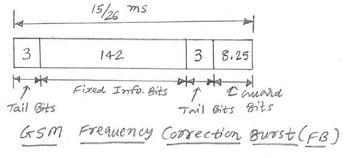Store and Forward vs. Cut Through Switch
Advertisement
This article compares Store and Forward Switches and Cut Through Switches, highlighting the differences in their switching methods. These switches function at Layer 2 (Data Link Layer) and Layer 3 (Network Layer) of the OSI model.
The following image depicts a typical Layer 2 frame structure, including the Frame Check Sequence (FCS), Layer 3/4 data, Ethernet type, and Source/Destination MAC addresses. Switches use this information to make forwarding decisions.
 Store and Forward Switch
Store and Forward Switch
Store and Forward Switch
Definition: A Store and Forward Switch forwards a frame only after receiving the entire frame content. This process is known as Store and Forward Switching.
Key Features:
- Error Checking: Performs error checking (using the FCS field) on each frame after the entire frame has been received. The switch calculates the FCS from the received frame data and compares it with the received FCS value to validate the frame.
- MAC Address Table Lookup: If the error check is successful, the switch looks up the destination MAC address in its MAC address table to determine the appropriate output port.
- Reliability: Store and Forward Switches are highly reliable because they avoid forwarding corrupted or incomplete frames.
- Speed: Slower than other switch types due to the error checking process, which requires holding the entire frame until it’s completely received.
Cut Through Switch
Definition: A Cut Through Switch forwards a frame immediately after examining only the frame’s destination MAC address. This is called Cut Through Switching.
This type of switch operates directly on the destination MAC address within the Layer 2 frame.
Key Features:
- Speed: Faster than Store and Forward switches because it bypasses error checking.
- Address Reading: Reads the destination address information as the frame enters the switch.
- Forwarding: After looking up the destination device’s port, the frame is immediately forwarded.
- Error Propagation: Cut Through Switches do forward bad frames. This can negatively impact network performance as these corrupted frames consume bandwidth and require retransmission.
Fragment-Free Cut Through Switch
Fragment-Free Cut Through switches aim to balance speed and error detection:
- Hybrid Approach: Combines the speed of a Cut Through Switch with error checking capabilities.
- Dynamic Configuration: Initially forwards all frames like a Cut Through switch. However, if a particular port experiences a high rate of bad frames, it can reconfigure that port to operate in Store and Forward mode.
- Preferred Solution: Often considered a desirable compromise between speed and reliability.
Advertisement
 RF
RF






